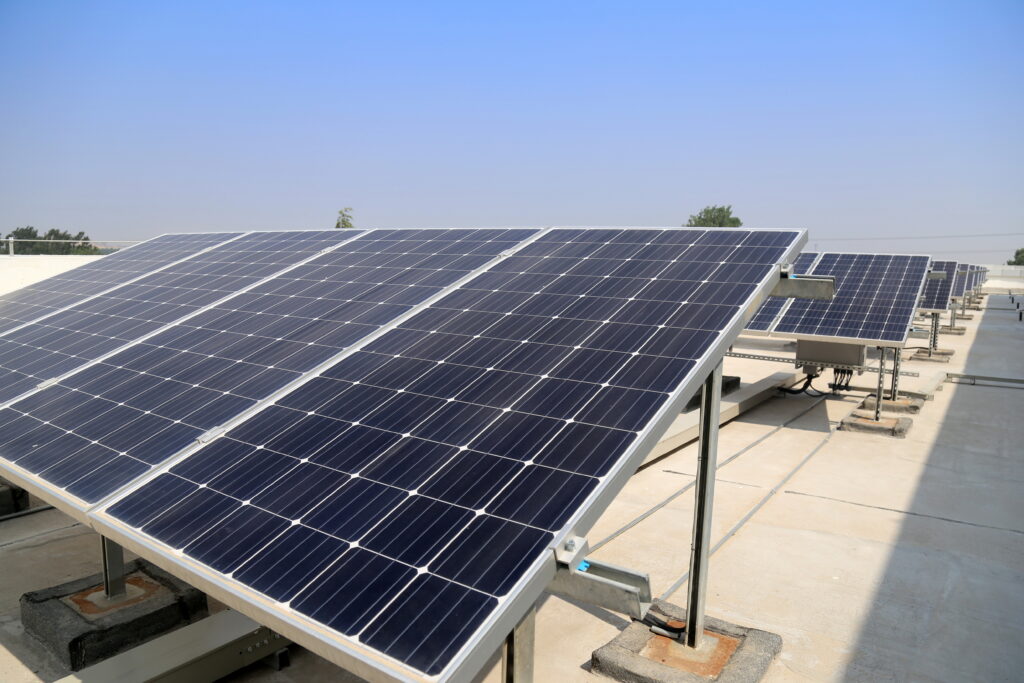Maximizing Solar Potential: Tips for Rooftop Solar Design and Placement
- By user

Introduction:
In the pursuit of sustainable energy solutions, rooftop solar installations have emerged as a promising avenue for homeowners and businesses looking to reduce their carbon footprint and cut energy costs. However, the effectiveness of a solar system heavily depends on its design and placement. In this blog post, we will delve into key strategies for maximizing solar potential, focusing on factors such as orientation, shading, and roof angles, to empower prospective buyers in making informed decisions about their solar installations.
Optimal Orientation for Solar Panels:
One of the fundamental considerations in maximizing solar potential is the orientation of solar panels. The direction in which panels face can significantly impact energy production. In the Northern Hemisphere, solar panels should ideally face south, while in the Southern Hemisphere, a north-facing orientation is preferable. This allows panels to capture the maximum amount of sunlight throughout the day, optimizing energy generation.
However, the practicality of achieving the perfect orientation may be limited by the structure of the home or other surrounding obstacles. In such cases, adjustments can be made by tilting the panels to compensate for suboptimal orientations. Tracking systems that follow the sun throughout the day can also enhance energy production, though they may come with higher costs.
Consideration of Shading:
Shading is a critical factor that can significantly impact the efficiency of a solar installation. Even a small amount of shade on a solar panel can lead to a considerable reduction in energy production. Before installing solar panels, it is essential to assess potential sources of shading, such as trees, neighboring buildings, or other obstructions.
Tree branches that cast shadows during certain times of the day or seasons may need to be trimmed. Similarly, neighboring buildings or structures that obstruct sunlight should be taken into account. Advanced technologies like microinverters or power optimizers can mitigate the impact of shading by allowing each panel to operate independently, minimizing the overall loss in energy production.
Optimal Roof Angles:
The angle at which solar panels are installed plays a crucial role in maximizing energy capture. The optimal angle varies based on geographical location and can be determined by the latitude of the installation site. In general, solar panels should be installed at an angle close to the latitude of the location to receive the maximum amount of sunlight throughout the year. The table below indicates the latitudes by state.
| States | Latitudes |
| Jammu and Kashmir, Uttarakhand, Himachal Pradesh, Punjab | 30 – 36 degrees |
| Uttar Pradesh, Delhi, Bihar, Haryana, Rajasthan | 24 – 30 degrees |
| Madhya Pradesh, Gujarat, West Bengal, Jharkhand, Chhattisgarh, Maharashtra, Odisha | 18 – 24 degrees |
| Tamil Nadu, Andhra Pradesh, Karnataka, Kerala, Telangana | 12 – 18 degrees |
Consult with solar professionals to determine the most suitable roof angle for their specific location.
Roof Material and Load-Bearing Capacity:
Before installing solar panels, it is crucial to evaluate the condition and load-bearing capacity of the roof. Different roofing materials have varying levels of durability and weight-bearing capacity. Solar panels add weight to the roof, and it is essential to ensure that the structure can support the additional load. Consulting with a structural engineer or a professional rooftop solar installer can help assess the roof’s capacity and recommend any necessary reinforcements.
Integration with Energy Storage Solutions:
To further maximize the benefits of rooftop solar installations, homeowners and businesses can consider integrating battery energy storage solutions such as batteries. Battery energy storage allows excess energy generated during sunny periods to be stored and used during cloudy days or at night, enhancing the overall efficiency and reliability of the solar system. Battery technology has advanced significantly in recent years, making it a viable option for residential solar installations. Homeowners should explore available battery options and consult with solar professionals to determine the most suitable energy storage solution for their needs.
Conclusion:
Maximizing solar potential through optimal rooftop solar design and placement is not only about harnessing clean energy but also about making a wise investment. By considering factors such as orientation, shading, roof angles, roof material, and battery energy storage, homeowners and businesses can ensure that their rooftop solar installations are not only environmentally friendly but also cost-effective and resilient. As the solar industry continues to evolve, staying informed about the latest technologies and best practices will empower consumers to make informed decisions and contribute to a more sustainable future.
